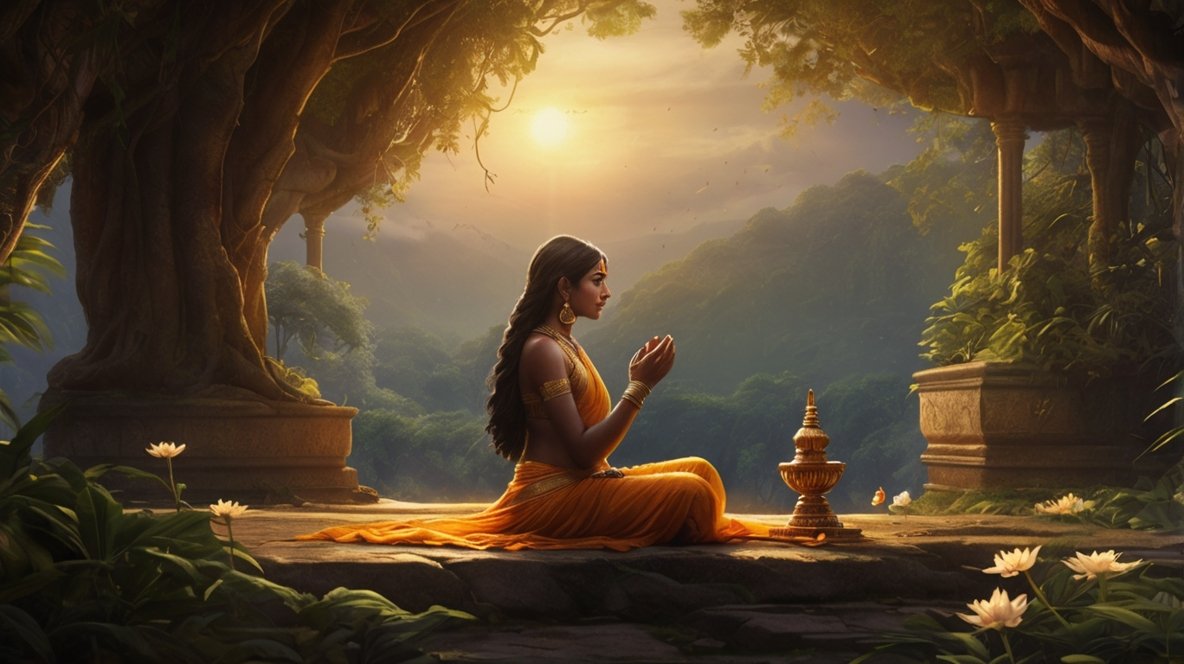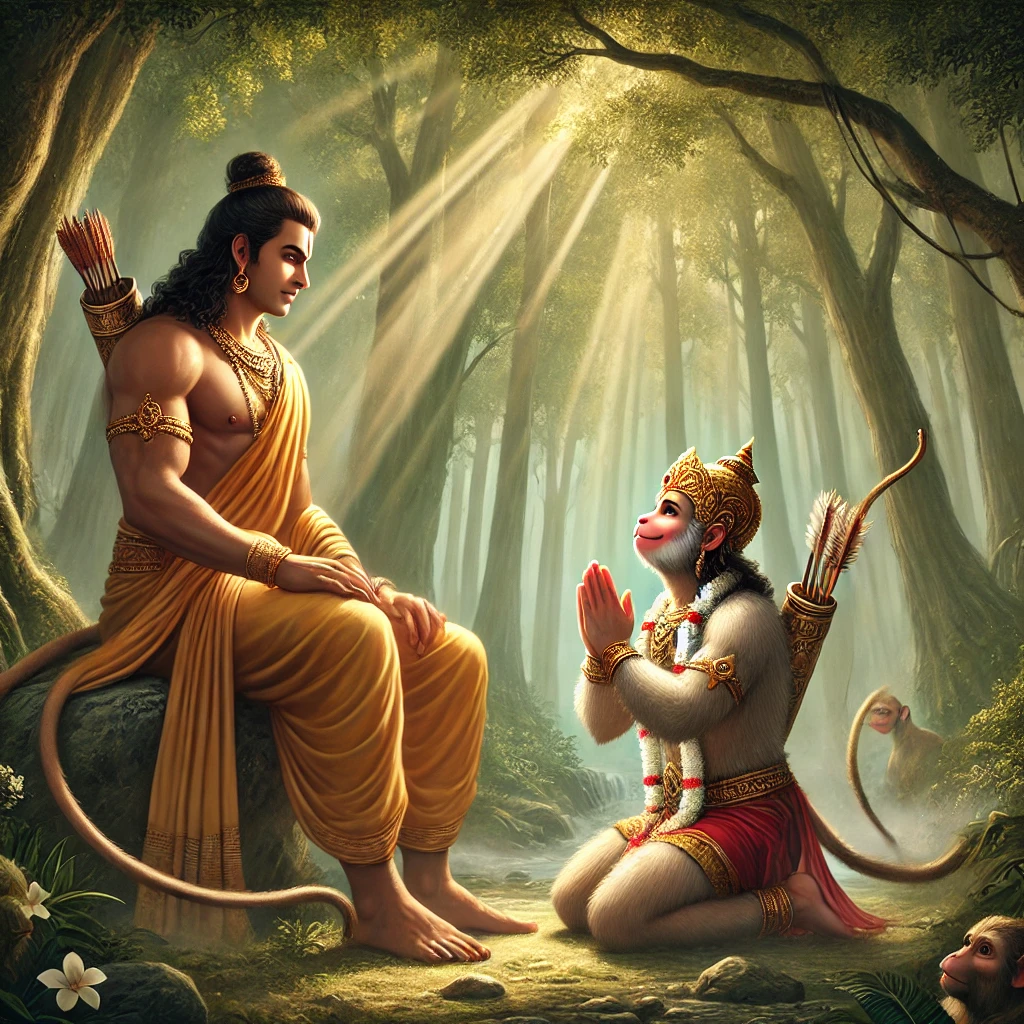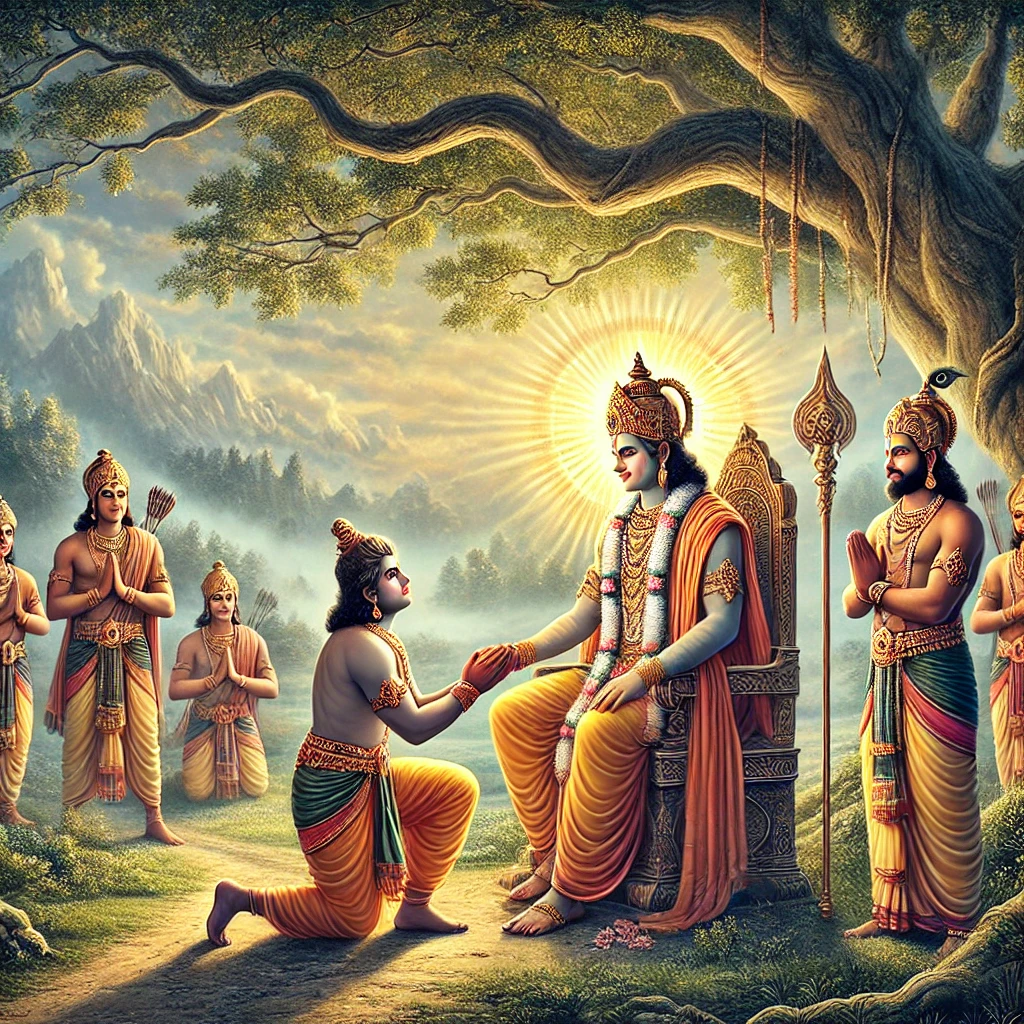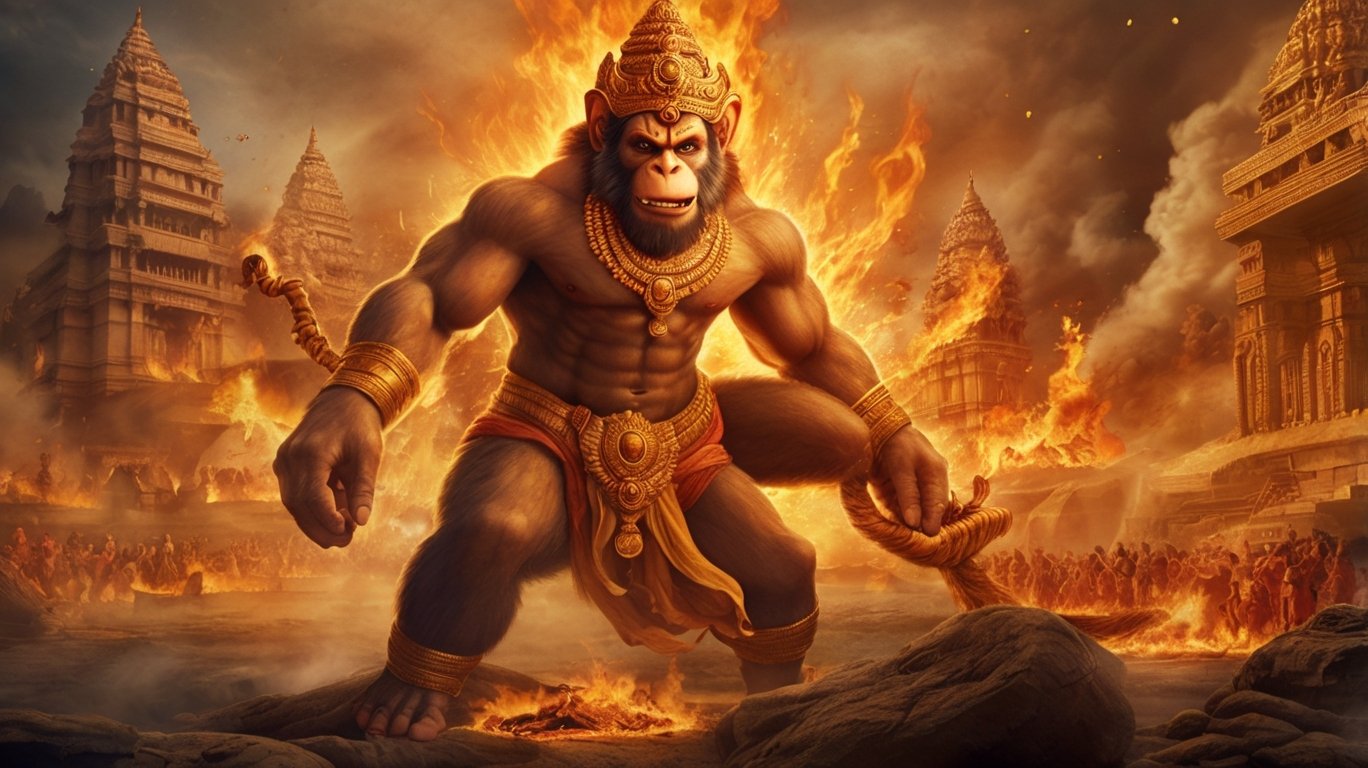Table of Contents
Introduction – Sita and Trijata
Welcome to Bedesii.com, where we delve into the timeless narratives that inspire and uplift our spirits. In this blog, we explore The Inspiring Saga of Sita and Trijata, a tale of resilience, friendship, and unwavering faith amidst adversity. As we journey through this remarkable encounter, we witness the extraordinary bond between Sita, the epitome of virtue and strength, and Trijata, the compassionate rakshasi who defies her nature to offer solace and hope. This captivating story not only highlights the struggles faced by these two remarkable characters but also serves as a reminder of the power of compassion and understanding. Join us as we unravel the layers of this enchanting saga, inviting you to reflect on the enduring lessons of love and loyalty that resonate through time. Let’s embark on this enlightening journey together!
sunata bacana puni marana dhava, mayatanaya kahi niti bujhava.
kahesi sakala nisicharinha bolai, sitahi bahu bidhi trasahu jai
masa divasa mahu kaha na mana, tau mai marabi karhi kripana
Explanation
Ravana sends his demons to harass Sita, threatening her by saying that if she doesn’t give in to his desires within a month’s time, he will kill her with his sword. This moment demonstrates Ravana’s cruel nature and desperation to make Sita submit to him, using fear and intimidation as his tools.
Sita, however, remains firm and undeterred by these threats, continuing to rely on her deep faith in Lord Rama to save her from Ravana’s evil plans.
Doha
Bhavana gayau dasakandhara iha pisacini brinda,
Sitahi trasa dekhavahi dharahi rupa bahu manda.
After Ravana leaves, a group of demonic beings (Pishachinis) approaches Sita. These demons, sent by Ravana, are intent on frightening her and causing mental anguish. They take on various terrifying forms, trying to instill fear in her heart. Ravana hopes that through constant terrorization and pressure, Sita will eventually give in to his demands.
However, despite all these cruel tactics, Sita remains resolute, holding onto her unwavering faith in Lord Rama. She doesn’t succumb to fear, demonstrating her inner strength and devotion.
This part of the story highlights Sita’s courage in the face of torment and Ravana’s relentless attempts to break her will, showing the contrast between her purity and his malevolence.
Chaupai
Trijata nama racchasi eka, Rama charana rati nipuna bibeka.
Sabanhau boli sunrisi sapana, sitahi sei karahu hita apana.Sapane banara lanka jari, jatudhana sena saba mari.
Khara arurha nagana dasa sisa, mundita sira khandita bhuja bisa.Ehi bidhi so dacchina disi jai, lanka manahu bibhishana pai.
Nagara phiri raghubira dohai, taba prabhu sita boli pathai.Yaha sapana mai kahau pukari, hoihi satya gyi dina chari.
Tasu bacana suni te saba dari, janakasuta ke charananhi pari.
Explanation
- Trijata’s Dream: Trijata, a wise and devout Rakshasi (demoness), is introduced here. Unlike the other cruel demons, Trijata is a devotee of Lord Rama and possesses deep wisdom. She calls upon the other Rakshasis and shares a significant dream she had.
- The Dream of Lanka’s Destruction: In her dream, she sees that the Vanara (monkey warrior) burn down Lanka, Ravana’s army is destroyed, and Ravana himself, humiliated, rides a donkey naked, with his head shaven and his arms cut off. This terrifying vision symbolizes Ravana’s impending doom and the victory of Lord Rama.
- Vision of Vibhishana’s Rise: In the dream, Trijata also sees Vibhishana, Ravana’s righteous brother, ruling over Lanka after its destruction. This suggests that righteousness will prevail, and the kingdom will belong to a just ruler, as Vibhishana is devoted to Lord Rama.
- Sita and Trijata Conversation: After witnessing these events in her dream, Trijata reassures Sita that the dream will come true in four days, predicting the downfall of Ravana and the eventual rescue of Sita. Hearing this, the other Rakshasis, who had been tormenting Sita, become frightened and fall at Sita’s feet, showing remorse.
Doha
Jaha taha gai sakala taba, Sita kara mana soch,
Masa divasa bite mohi, marihi nisichara poch.
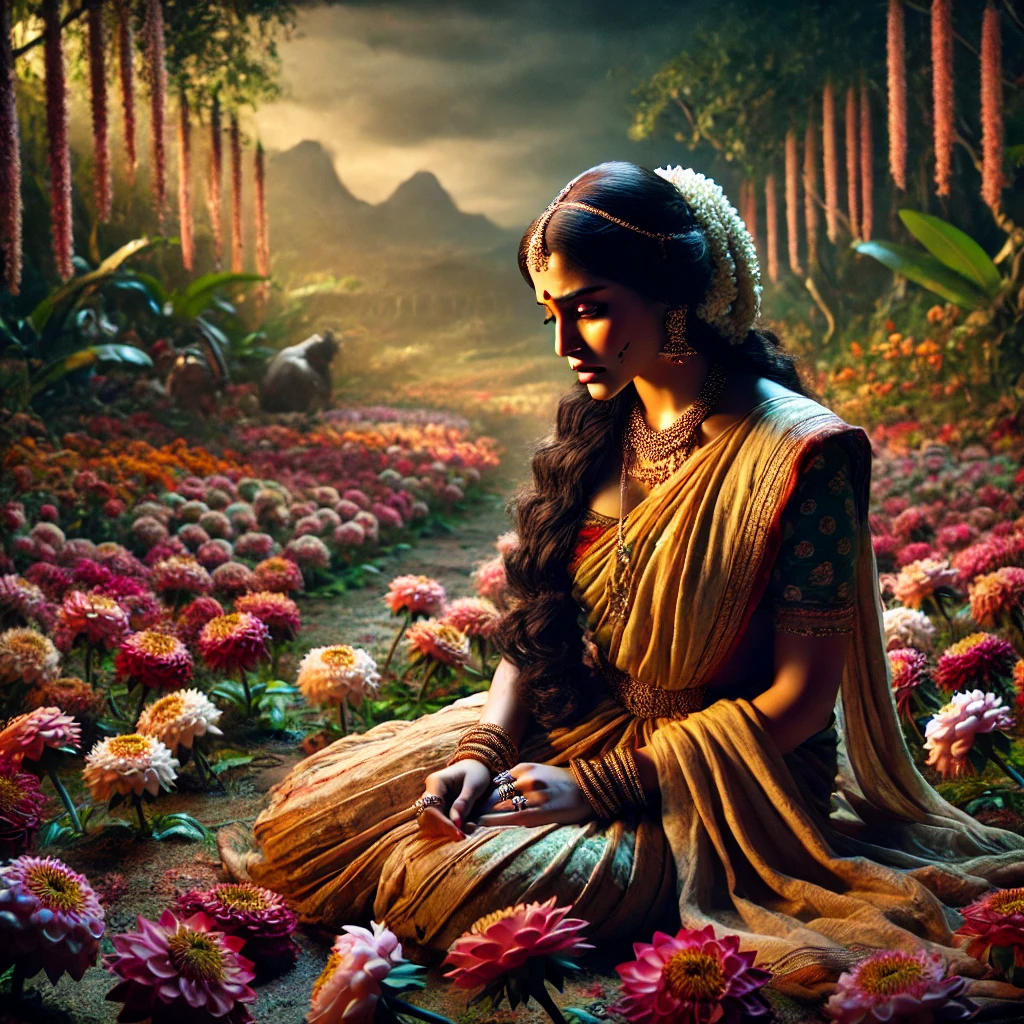
Explanation
- Sita’s Deep Worry: This Doha reflects Sita’s intense sorrow and anxiety as she contemplates her situation. The Rakshasis have spread out after hearing Trijata’s dream, and now Sita is left alone in her thoughts. She is deeply troubled, fearing that her days in Lanka are numbered.
- The Time Limit Set by Ravana: Sita is distressed, thinking that if she does not give in to Ravana’s demands within the time frame of one month, she will be killed by his demonic forces. This imminent threat looms over her, adding to her mental anguish.
- Feeling Helpless: Sita’s mind is consumed with the fear of death at the hands of the Rakshasas (demons), as Ravana had warned her. She is struggling with feelings of helplessness, isolated from her beloved Lord Rama and surrounded by enemies.
Trijata sana boli kara jori, matu bipati sangini tai mori.
Tajau deha karu begi upai, dusaha birahu aba nahi sahi jai.Ani kaath rachu chita banai, matu anala puni dehi lagai.
Satya karahi mama priti sayani, sunai ko sravana sula sam bani.Sunata bachana pada gahi samujhaesi | Prabhu pratap bala sujasu sunaesi
Nisi na anala mil sunu sukumari | As kahi so nija bhavan sidhaari.Kaha sita bidhi bha pratikula, milihi na pavaka mitihi na sula.
Dekhiata pragata gagana angara, avani na avata ekau tara.Pavakamaya sasi sravata na agi, manahu mohi jani hata bhagi.
Sunahi binaya mama bitapa asoka, satya nama karu haru mama soka.Nutana kisalaya anala samana, dehi agini jani karahi nidana.
Dekhi parama birahakula sita, so chana kapihi kalapa sama bita.Sortha: Kapi kari hridaya bichara dinhi mudrika dari taba,
Janu asoka angara dinha harashi uthi kara gaheu.
Explanation
In these verses, we see Sita’s deep anguish and her conversation with the compassionate demoness, Trijata, who had earlier narrated a positive dream about Lord Rama’s victory. Sita, overwhelmed by her sorrow, speaks to Trijata with folded hands, expressing that she can no longer bear the pain of separation from Lord Rama. She contemplates ending her life by preparing a funeral pyre from the wood of the nearby trees.
Sita says she cannot endure the agony of separation any longer and begs Trijata to help her in taking this extreme step, as she believes that no one is coming to rescue her. She further expresses her suffering by saying that even fire seems to avoid her, and the stars and sky do not provide any relief to her misery. She compares her sorrow to a never-ending cycle of pain, wondering why she has been abandoned by fate.
Amidst her sorrow, Sita prays to the Ashoka Tree, urging it to stay true to its name (“Ashoka” meaning “without sorrow”) and remove her grief by bringing some relief, even in the form of burning her sorrow through its leaves, which she sees as akin to fire.
At this point, Hanuman, who has been watching from a distance, recognizes the urgency of the situation. Understanding her immense grief and despair, Hanuman decides to act. He quietly presents Lord Rama’s ring to Sita, a symbol of their connection and a message of hope. The moment Sita sees the ring, her joy is boundless. It feels as though her hope has been reignited, just like a flicker of light amidst the darkness of her despair.
The verse captures the turning point of Sita’s sorrow, where she finds a glimmer of hope through the ring of Lord Rama delivered by Hanuman. This gesture reassures her that her beloved Lord Rama is on his way to rescue her, ending the cycle of suffering and rekindling her faith in the divine.
Chaupai
Taba dekhi mudrika manohara, Rama nama ankita ati sundara.
Chakita chitava mudari pahicani, harash bishad hridaya akulani.Jiti ko sakai ajaya raghurai, maya te asi rachi nahi jai.
Sita mana bichara kara nana, madhura bachana boleu hanumana.Rama chandra guna baranai laga, sunatahi sita kara dukha bhaga.
Lagi sunai sravana mana lai, adihu te saba katha sunai.Sravanamrita jehi katha suhai, kahi so pragata hoti kina bhai.
Taba hanumanta nikata chali gayau, phiri baithi mana bisamaya bhayau.Ramaduta mai matu janaki, satya sapatha karunanidhana ki.
Yaha mudrika matu mai ani, dinhi Rama tumha kaha sahidani.
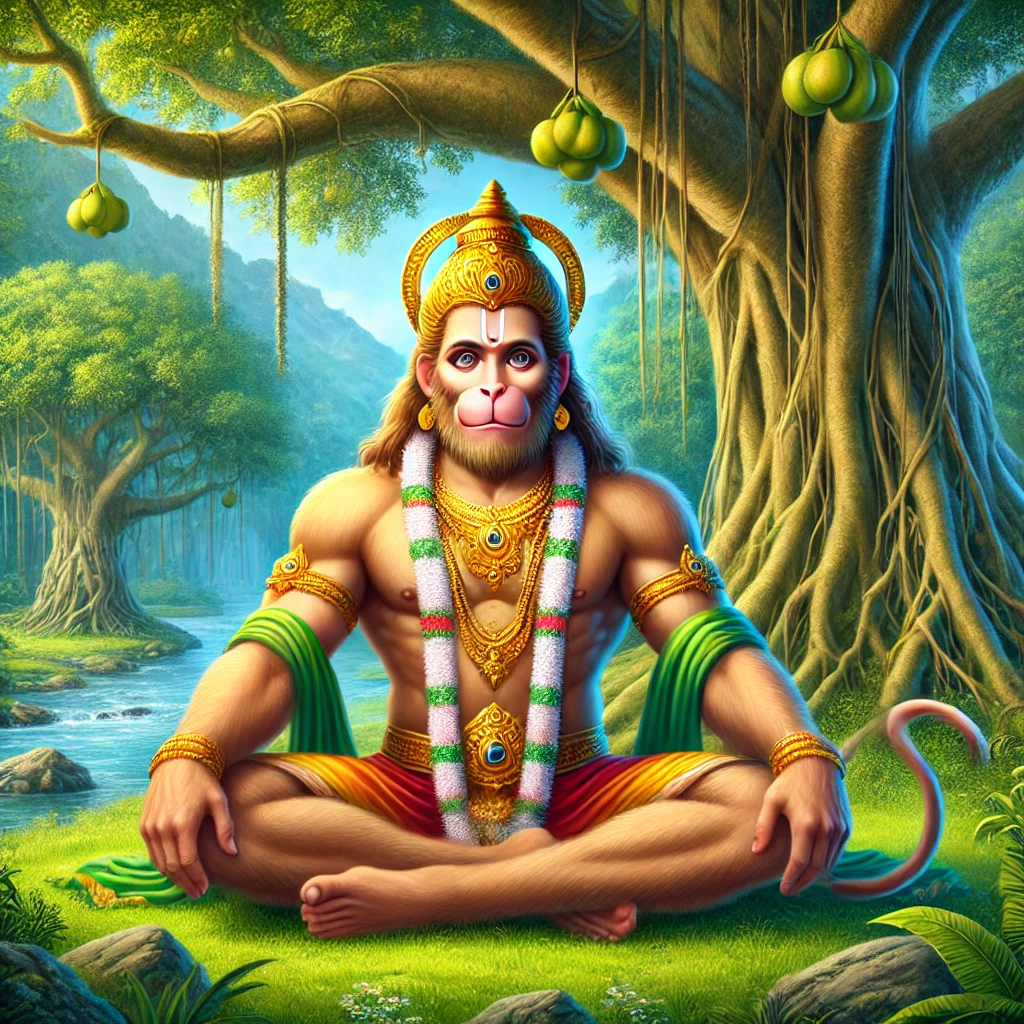
Explanation
In these verses, we witness a profound emotional exchange between Hanuman and Sita. As Sita catches a glimpse of the ring that Hanuman presents, she is immediately captivated by its beauty and the name of Rama inscribed upon it. This moment fills her heart with both joy and sorrow, reflecting the duality of her emotions in this dire situation.
Sita, recognizing the mudrika (ring), feels a rush of emotions, indicating the depth of her connection to Lord Rama. The ring symbolizes hope, love, and the unwavering bond she shares with her husband. Hanuman, aware of Sita’s anguish, speaks to her with gentle words, reassuring her that Rama will overcome all challenges and that there is no force that can defeat him.
As Sita contemplates her suffering, Hanuman reminds her of the virtues and qualities of Rama, encouraging her to remain hopeful. He recounts the stories of Rama’s bravery and wisdom, emphasizing that listening to these tales brings comfort and peace. The narrative unfolds in such a way that the sweetness of the conversation and the sacredness of Rama’s name become a balm for Sita’s troubled heart.
Hanuman then approaches Sita, who is overwhelmed with emotions and finds herself in a state of deep contemplation. He emphasizes his loyalty to Rama, swearing by the truth of the Lord’s character, and assures Sita that she is never alone in her trials. He presents the ring as a tangible symbol of Lord Rama’s presence and commitment to rescue her.
Through these verses, the essence of devotion, hope, and the indomitable spirit of Hanuman shines through, reaffirming the eternal bond between Rama and Sita. Hanuman’s unwavering loyalty and love serve as a reminder to Sita that, despite her current tribulations, salvation and reunion with her beloved Rama are on the horizon.
Insights
- Emotional Depth of Sita: The verses reflect Sita’s emotional turmoil, illustrating her deep anguish and longing for Lord Rama. Her feelings are relatable and emphasize the theme of separation and devotion.
- Divine Intervention: The role of Hanuman as a divine messenger is highlighted, showcasing how his presence and actions bring hope to Sita.
- Power of Faith: The verses convey the significance of faith and the belief in Lord Rama’s strength and ability to overcome adversity.
- Connection Through Symbols: The importance of Rama’s ring (mudrika) symbolizes the bond between Sita and Rama, serving as a tangible reminder of their love and commitment.
- Compassion of Trijata: Trijata, the demoness, shows compassion and understanding towards Sita, illustrating the complexity of characters in the Ramayana.
Events
- Hanuman’s Arrival: Hanuman arrives in Ashoka Vatika to deliver Rama’s message to Sita, marking a crucial turning point in her captivity.
- Sita’s Recognition of the Ring: Sita recognizes Rama’s ring brought by Hanuman, affirming her hope and reinforcing her faith in Rama.
- Hanuman’s Assurance: Hanuman reassures Sita of Rama’s love and commitment, sharing stories of their shared past to uplift her spirits.
Entities
- Sita: The central figure of devotion and anguish, symbolizing the ideal woman and devoted wife.
- Hanuman: The devoted messenger of Lord Rama, embodying loyalty, strength, and courage.
- Rama: The embodiment of dharma, virtue, and righteousness, central to Sita’s hope and faith.
- Trijata: A demoness who serves as a source of support and comfort for Sita, showcasing the nuanced portrayals of characters in the Ramayana.
- Ravana: The antagonist whose actions lead to Sita’s abduction and the subsequent events of the Ramayana.
FAQs
- Who is Trijata and what role does she play in the story?
- Answer: Trijata is a demoness who shows compassion towards Sita during her captivity in Lanka. She reassures Sita and shares comforting dreams, highlighting the theme of kindness even among adversaries.
- What significant event occurs when Hanuman meets Sita in the Ashoka Vatika?
- Answer: Hanuman meets Sita and delivers Rama’s message, bringing her hope. He gives her Rama’s ring (mudrika) as a symbol of their bond and commitment, reassuring her of Rama’s love.
- How does Sita react to Hanuman’s arrival and the news he brings?
- Answer: Initially filled with despair, Sita feels a surge of hope upon receiving Rama’s message and seeing the ring. She expresses her deep emotional turmoil and longing for Rama, emphasizing her unwavering faith.
- What does Sita’s recognition of Rama’s ring symbolize?
- Answer: The recognition of the ring symbolizes the unbreakable bond of love and loyalty between Rama and Sita, serving as a tangible reminder of their relationship and commitment to each other.
- What is the significance of the phrase “Sita kara mana soch”?
- Answer: This phrase reflects Sita’s troubled mind and her deep emotional struggle during her captivity, illustrating her vulnerability and the heavy burden of separation from Rama.
Read Also
Sundarkand Part 1 | Sundarkand Part 2 | Sundarkand Part 3 | Sundarkand Part 4 | Sundarkand Part 6 | Sundarkand Part 7 | Sundarkand Part 8 | Sundarkand Part 9 | Sundarkand Part 10
Important Links
Hanuman Chalisa in Hindi | Hanuman Chalisa in Kannada |Hanuman Chalisa in Bengali | Bajrang Baan in English | Hanuman Ashtak | Hanuman Chalisa in Assamese

